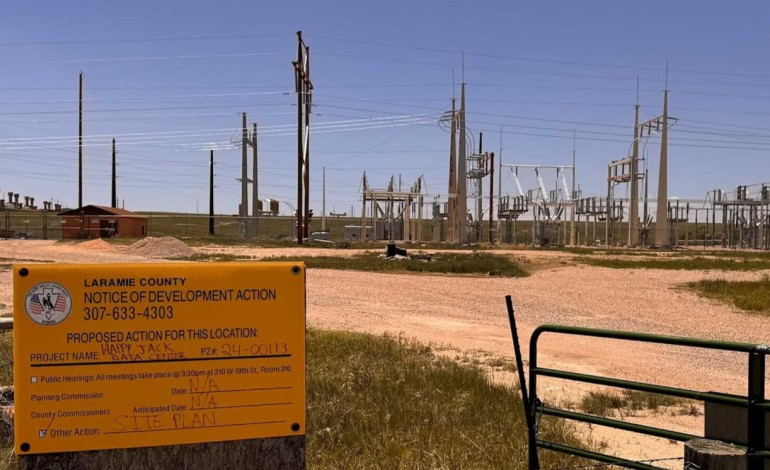Wyoming, long recognized as one of the nation’s top energy exporters, sends out 15 times more power than it consumes, Cowboy State Daily reports.
Yet, despite this surplus, the state is facing significant challenges in meeting its own energy needs—particularly for economic development and large-scale industrial growth.
This contradiction is not lost on business leaders in the state. Wendy Lopez, a business recruitment manager with the Wyoming Business Council, regularly fields inquiries from companies interested in siting energy-intensive facilities such as data centers or manufacturing plants in the state. While Wyoming’s abundant power production and low population suggest ample capacity, the reality is more complicated.
“All of our infrastructure has been built around supporting energy to other places that are buying it,” Lopez told Cowboy State Daily.
The state’s power grid, especially in communities along the I-80 corridor, was designed for much smaller loads. For example, many towns along this highway only draw between 20 and 50 megawatts of power. Proposals for projects demanding 250 megawatts or more would require entirely new infrastructure—upgrades that are time-consuming and costly.
As a result, many businesses opt to locate elsewhere, particularly along I-80 in neighboring states, where data center development is far more prevalent. That trend drops off sharply after Cheyenne and doesn’t reappear until Utah, despite Wyoming’s strategic location and energy output.
Some of the frustration is directed at Rocky Mountain Power, a major utility provider for much of southern Wyoming. Kayla McDonald, an economic development specialist in Sweetwater County, said her team no longer actively recruits data centers due to ongoing issues with local power capacity.
Rocky Mountain Power has acknowledged growing demand across its six-state service area. Company Vice President Tom Carter recently told state lawmakers that the utility has received over 10 gigawatts of service requests—ten times Wyoming’s current load, which took a century to reach. However, Carter also highlighted the challenge of sorting through genuine business prospects and speculative requests, as well as the difficulty in scaling infrastructure quickly.
Beyond logistics, regulatory uncertainty adds another layer of complexity. Fluctuating state and federal policies and tensions within the six-state compact under PacifiCorp (Rocky Mountain Power’s parent company) have led to disagreements about future energy priorities. States like Wyoming and Utah favor continued investment in coal and natural gas, while others push for renewables. This division could eventually lead to the fragmentation of the compact, potentially raising energy costs for ratepayers.
Some experts are advocating for market-based alternatives to meet demand. Thor Nelson, an attorney representing the Wyoming Industrial Energy Consumers group, supports allowing third-party power generation for large-load customers. Under such arrangements, businesses could contract independently for power production—bypassing traditional utilities and accelerating project timelines without shifting risk to existing customers.
“The utilities’ business model isn’t really set up for this type of rapid, large-scale growth,” Nelson said. “Allowing market flexibility can help Wyoming grow without overburdening the existing grid or raising rates for other customers.”
But power supply issues are only part of a broader economic struggle. According to Wyoming Business Council Executive Director Josh Dorrell, the state’s GDP and median wages have declined since 2008. He believes Wyoming’s low tax structure—while appealing on the surface—may actually hinder growth by limiting the resources communities need to expand infrastructure, housing, and public services.
“In many cases, it’s not the tax burden holding back businesses—it’s a lack of workforce housing and essential services,” Dorrell said. “Without the ability to invest in growth, communities stagnate or shrink.”
To address this, the Wyoming Business Council is refocusing its Business Ready Community Grant and Loan Program. The initiative now prioritizes helping local governments identify and overcome their specific barriers to economic development, while also encouraging stronger local funding commitments.










The latest news in your social feeds
Subscribe to our social media platforms to stay tuned